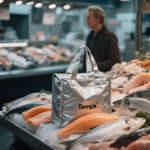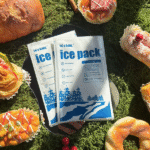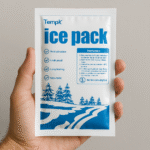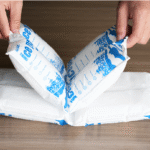Cold Chain Temperature Indicators: Vaccine Safety 2025
Maintaining the right temperature is the lifeline of vaccines and many foods. Cold chain temperature المؤشرات help you make sure that life saving medicines and perishable goods remain within safe temperature limits even when travelling across continents. Most vaccines must stay between 2 درجة مئوية و 8 درجة مئوية, and a single freezing event or heat excursion can render them useless. Studies show that up to 35 % of the world’s vaccines experience accidental freezing. في نفس الوقت, أكثر من 8 billion vaccine vial monitors have been deployed, توفير 140 000 lives and ensuring 1.5 billion extra doses reach remote communities. هذا المقال, تم تحديثه 19 نوفمبر 2025, explains how temperature indicators work, لماذا يهم, and what new developments you can expect as we move into 2025.
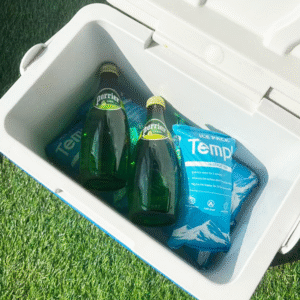
What cold chain temperature indicators are and why they are essential for vaccine and food safety, using long tail keywords like vaccine vial monitors و freeze indicators.
How different types of indicators—vaccine vial monitors, freeze indicators, time temperature indicators and digital data loggers—compare, along with practical long tail keywords like choosing a digital data logger.
What challenges and solutions exist when shipping temperature sensitive goods and how to choose the right indicator for your operation.
Which trends and innovations are shaping the field of cold chain temperature indicators in 2025, including eco friendly packaging and predictive analytics.
Frequently asked questions such as how to interpret a freeze tag or whether regulations mandate vaccine vial monitors.
Why do cold chain temperature indicators matter for vaccine safety?
Temperature indicators are devices that visually or electronically signal when vaccines or other temperature sensitive goods have been exposed to unsafe temperatures. Without them, there is no easy way to know whether your shipment has been compromised. Vaccines are particularly sensitive to heat and freezing: they must remain at 2 درجة مئوية – 8 درجة مئوية في معظم الحالات, و even one freezing event makes them unusable. Research suggests that up to 35 % of vaccines are accidentally frozen worldwide. Temperature indicators provide an immediate, visible signal of such events, protecting patients from ineffective or unsafe products and saving money by reducing wastage. على سبيل المثال, vaccine vial monitors (VVMs) cost around six US cents each but have enabled distribution of 1.5 billion extra doses and prevented 368 million inactive doses from being administered.
Temperature indicators also fulfil regulatory requirements. ال World Health Organization’s Controlled Temperature Chain (لجنة مكافحة الإرهاب) guidelines state that every vaccine vial must have a VVM and that each vaccine carrier should include a peak threshold indicator. National regulators like the CDC recommend that digital data loggers have buffered probes, alarm functions and calibration certificates to ensure accurate temperature recording. Without proper indicators, shipments may fail audits or be recalled, leading to supply disruptions and reputational damage. فضلاً عن ذلك, indicators support sustainability goals: by reducing wasted doses and enabling reuse of packaging, they lower the carbon footprint of cold chains.
Types of cold chain temperature indicators
Not all temperature indicators are alike. They vary in cost, function, precision and application. The main categories include vaccine vial monitors (VVMs), freeze indicators, time temperature indicators (TTIs) و مسجلي البيانات الرقمية (DDLs). Each serves a different purpose:
| Indicator Type | كيف تعمل | أفضل حالات الاستخدام | ماذا يعني بالنسبة لك |
| Vaccine vial monitor (VVM) | A small circular label with a central dot that darkens irreversibly when cumulative heat exposure exceeds a defined limit. It uses diacetylene polymerisation chemistry and costs about نحن $0.06 per unit. | Attached to individual vaccine vials; helps health workers in remote settings assess heat exposure and use vials in the right order. | Ensures potency of vaccines in resource limited regions; reduces waste and enables safe controlled temperature chain shipments. |
| Freeze indicator (freeze tag) | An electronic or chemical device that turns from a “check” (✔) to an “alarm” (x) when exposed to 0 درجة مئوية لأكثر من 60 دقائق. Once triggered it cannot be reset and must be replaced. | ثلاجات, صناديق باردة, shipping containers prone to freezing; products damaged by freezing (اللقاحات, البيولوجيا, المواد الكيميائية). | Alerts you immediately if your cargo has been frozen, so you can prevent compromised products from reaching patients. |
| Time temperature indicator (TTI) | A smart label or sensor that integrates temperature and time to estimate product degradation. Some rely on enzymatic or polymer reactions; others use electronic circuits. They provide a visible progression scale indicating safe, warning and discard zones. | Food packaging, pharmaceuticals with cumulative heat sensitivity, تسليمات الميل الأخير; monitoring shelf life and consumer safety. | Shows whether a product has been kept within safe conditions throughout its journey, helping you decide when to use or discard it. |
| Digital data logger (DDL) | A reusable electronic recorder with a buffered probe and memory that continuously measures and logs temperatures. Recommended features include alarms for out of range temperatures, displays of current and min/max values, uncertainty ≤±0.5 °C and calibration certificates. | بيولوجيا ذات قيمة عالية, التجارب السريرية, long haul shipments, storage freezers; remote monitoring and auditing. | Provides detailed temperature profiles for regulatory compliance, quality assurance and predictive analytics. Data can be downloaded for audits and continuous improvement. |
Practical tips and advice for different scenarios
Routine vaccine storage: Use a digital data logger with a buffered probe and set the logging interval to at least 30 دقائق. Check the device’s min/max display daily and respond to any alarms immediately. Replace the probe’s battery before it reaches end of life.
Remote immunisation campaigns: Equip each vial with a VVM as required by WHO. Include a peak threshold indicator in each carrier and a freeze tag to detect accidental freezing. Train vaccinators to read VVMs and use the oldest acceptable vials first.
Pharmaceutical shipping: Attach freeze indicators to packaging for temperature sensitive biologics that cannot withstand freezing. For shipments requiring cumulative heat monitoring, add a time temperature indicator that visually signals heat exposure. Use digital data loggers to capture detailed data and support audits.
Food distribution: Use TTIs that integrate time and temperature to monitor perishable foods and reduce waste. Choose labels that suit your product’s shelf life and storage conditions. Encourage end users to check the indicator before consuming the product.
Last mile delivery: For home delivery of temperature sensitive packages, include simple indicators such as Timestrip’s neo that the end user can read. Use QR codes or NFC tags for easy traceability and consumer engagement.
مثال العالم الحقيقي: PATH estimates that more than 8 billion vaccine vial monitors have been distributed globally, enabling replacement of 368 million inactive doses and delivering 1.5 billion extra doses to people in remote settings, توفير زيادة 140 000 lives. This demonstrates how a simple indicator can dramatically improve public health outcomes.
Which temperature indicator should you choose for your operation?
Selecting the right temperature indicator depends on your product, مدة الشحن, regulatory environment and budget. Time temperature indicators integrate both time and temperature, providing a cumulative view of heat exposure. Freeze indicators simply show if a product has been exposed to sub zero temperatures. Vaccine vial monitors are a specific form of time temperature indicator optimised for vaccines. مسجلات البيانات الرقمية offer detailed data and remote monitoring capabilities. النظر في العوامل التالية عند الاختيار:
حساسية المنتج: Highly temperature sensitive biologics may require both freeze and time temperature monitoring. Use a freeze tag to detect freezing and a TTI or VVM to track heat exposure. For mRNA vaccines stored at ultra cold temperatures, choose a data logger capable of measuring −80 °C or lower and with a probe made of glycol or glass beads for accurate measurement.
Journey length: For long haul shipments, reusable digital data loggers provide robust data for the entire journey. For short last mile deliveries, a single use indicator may suffice.
المتطلبات التنظيمية: Some vaccines must have VVMs on each vial and a peak threshold indicator in each carrier. If shipping to the EU, ممارسة توزيع جيدة (الناتج المحلي الإجمالي) guidelines require continuous temperature monitoring and documentation. Choose devices that meet these standards.
الميزانية والاستدامة: VVMs and freeze tags are inexpensive but single use. Digital loggers cost more but can be reused many times, خفض التكاليف على المدى الطويل. Look for eco friendly options such as biodegradable label materials and reusable data loggers.
Selecting the right indicator: in depth
Different industries have different priorities. The following table helps you decide which indicator suits your needs:
| Decision Criteria | Vaccine Vial Monitor (VVM) | Freeze Indicator | Time Temperature Indicator | Digital Data Logger | Your Priority |
| نطاق درجة الحرارة | 2 درجة مئوية -8 درجة مئوية; cumulative heat exposure | Sub zero detection (0 ° C ل 60 دقيقة) | Custom thresholds, often 0–25 °C or 2–8 °C | Broad range including ultra cold (≤–80 °C) | Match your product’s limits |
| Data type | Visual colour change (no numeric data) | Visual change from OK to alarm | Colour scale indicating time temperature history | Digital temperature log with time stamps | How much detail you require |
| Resettable | لا; استخدام واحد | لا; once activated cannot be reset | Mostly single use; some electronic versions reusable | نعم; memory can be cleared after downloading data | اعتبارات الاستدامة |
| Reading complexity | بسيط جدا; check colour intensity | بسيط; check symbol ✔ or X | Simple to moderate depending on scale | More complex; requires software to read data | Training and user friendliness |
| يكلف | منخفض جدًا (~$0.06 per vial) | قليل; cheap chemical or electronic tags | يختلف; enzymatic/polymers cost moderate, electronic versions more | Higher upfront cost but reusable; calibration required | Budget planning |
| القبول التنظيمي | Mandated by WHO for certain vaccines | Recommended by WHO and national guidelines | Increasingly used for food safety compliance | Required for GDP compliance and audits | Meet compliance |
Tips for effective implementation
Choose an indicator that matches your product’s risk profile. للقاحات, a combination of VVMs and freeze tags is often required. للأطعمة القابلة للتلف, TTIs provide valuable shelf life information.
Calibrate and maintain your devices. Digital data loggers must have current calibration certificates and a buffered probe. Replace batteries and sensors according to manufacturer guidelines.
تدريب موظفيك. Teach staff how to read indicators and take action when they show a breach. For VVMs, use the darkest acceptable colour as a guide: if the inner circle is darker than the outer ring, discard the vial.
Document and respond. Record indicator readings during transport and storage. If a freeze indicator alarm triggers, perform a shake test before discarding vaccines. Use data from digital loggers to identify weak points in your cold chain and improve processes.
Integrate with smart systems. Use QR codes and NFC tags to link indicators to digital records for traceability. Connect data loggers to cloud platforms for real time alerts, reducing response times.
دراسة حالة: During an outbreak response in West Africa, health workers used freeze indicators in portable refrigerators. When one indicator triggered an alarm, they performed a shake test and discovered that the vaccine had lost potency. By discarding the compromised vials and using a backup supply, they prevented administering ineffective vaccines and maintained community trust.
What innovations and trends are shaping temperature indicators in 2025?
نظرة عامة على الاتجاه
The cold chain is evolving rapidly. Market reports predict that the time temperature indicator labels market will grow from US $4.8 مليار في 2025 ل $15.2 مليار من قبل 2035 وبمعدل نمو سنوي مركب (CAGR) ل 12.2 %. Another report estimates a نحن $948.7 million market in 2025 for TTI labels, الوصول $1.514 مليار من قبل 2032 (CAGR 6.9 %). Full history indicators hold about 46 % الحصة السوقية, and enzymatic indicators lead the technology segment with 38 % يشارك. Asia Pacific dominates the market, while North America is the fastest growing region.
Innovation extends beyond market growth:
Smart cold chain solutions: Smart packaging is integrating sensors into containers and packaging materials. The Timestrip article notes that smart cold chain solutions are emerging with مواد تغيير المرحلة (PCMS) و لوحات معزولة فراغ (كبار الشخصيات) to extend thermal performance. These solutions combine physical insulation with temperature indicators for more reliable shipments.
Specialised indicators for new therapies: الطلب المتزايد على GLP 1 based weight loss drugs and biologics such as semaglutide requires precise temperature monitoring. Timestrip responded by developing new neo indicators specifically designed for these shipments.
Eco friendly materials and reusable packaging: Sustainability is a priority. Packaging firms are adopting biodegradable and recyclable materials and designing reusable packages with removable temperature indicators. This allows carriers to separate indicators from the packaging for recycling or re use.
Regulatory compliance and embedded sensors: Improved packaging designs integrate embedded sensors and radio frequency identification (RFID) العلامات to log temperature data automatically. Devices like the Timestrip TL520 mini data logger provide benefits of full data loggers at lower cost.
Active packaging and last mile delivery solutions: في الطعام, time temperature integrating indicators (TTIs) are being incorporated into active packaging to signal if food has been exposed to unsafe temperatures. بسيط, single use indicators are used for last mile delivery so that end users can verify temperature integrity upon receipt.
Digital integration and predictive analytics: Smart packaging increasingly leverages QR codes and NFC tags for product traceability and temperature data access. Analytical software uses temperature data to predict risk of excursions and trigger preventive measures.
Regulatory and environmental pressures: Stricter food safety laws, extended producer responsibility policies and environmental packaging directives are driving adoption of temperature indicators. Innovations include nano enabled sensors for enhanced sensitivity and cost effective manufacturing techniques.
أحدث التطورات في لمحة
Full history indicators dominate: Full history TTIs hold around 46 % الحصة السوقية because they provide complete exposure history.
Enzymatic technologies gain traction: Enzymatic indicators account for about 38 % of the TTI market, offering biological reactions that mirror product degradation.
Barcode based systems lead: Barcode based temperature indicators represent زيادة 80 % من حصة السوق according to Coherent Market Insights. These systems are easily integrated into existing logistics operations.
New therapies drive demand: Semaglutide shipments and other GLP 1 based drugs require specialised temperature indicators to maintain potency.
Eco friendly materials expand: Biodegradable and recyclable packaging with removable indicators is becoming standard.
رؤى السوق
The demand for temperature indicators is driven by several trends:
Food and beverage sector dominance: The food and beverage industry accounts for the largest share of TTI adoption, reflecting increasing consumer demand for freshness and safety. Real time TTIs help suppliers monitor products from processing to retail shelves.
Asia Pacific leads, North America grows fastest: Asia Pacific holds about 34.8 % of the TTI market, fuelled by rising food exports and pharmaceutical manufacturing. North America’s growth is driven by strict regulatory requirements and consumer awareness.
الامتثال التنظيمي: Stricter food safety and pharmaceutical regulations compel companies to adopt temperature monitoring devices. The GDP guidelines emphasise proper storage conditions and traceability. Extended producer responsibility laws require companies to ensure that packaging, including indicators, is recyclable or reusable.
Technology convergence: Integration of indicators with IoT, blockchain and data analytics platforms allows real time visibility and predictive maintenance. Nano enabled sensors and cost effective manufacturing are making advanced indicators accessible.
توقعات المستهلك: Customers increasingly expect transparency. Indicators with QR codes allow end users to verify conditions of their purchases, enhancing trust and brand loyalty.
الأسئلة المتداولة
س 1: What is the difference between a time temperature indicator and a digital data logger?
A time temperature indicator (TTI) is a small label that changes colour depending on cumulative temperature exposure. It provides a simple visual cue of whether a product has stayed within safe limits. A digital data logger (DDL) is a more complex device that measures and records temperature at regular intervals using a buffered probe. While a TTI is suitable for simple monitoring during transportation, a DDL offers detailed data for audits, regulatory compliance and predictive analytics. Choose a DDL when you need precise records and remote monitoring.
Q2: How can I tell if a freeze indicator has been triggered?
Freeze indicators display a change when the product has been exposed to sub zero temperatures. على سبيل المثال, freeze tags used in vaccine cold chains show an “ALARM” symbol (x) if the temperature drops below 0 درجة مئوية لأكثر من 60 دقائق. Once triggered, the indicator cannot be reset; you must conduct a shake test to check vaccine potency and discard if necessary.
س 3: Are vaccine vial monitors mandatory for all vaccines?
ال World Health Organization’s Controlled Temperature Chain guidelines state that each vaccine vial must have a vaccine vial monitor when used in a CTC and that each carrier should include a peak threshold indicator. Many national immunisation programmes adopt these guidelines for routine use. Some vaccines may not have VVMs due to high stability or regulatory variations, but they are increasingly standard.
س 4: How often should digital data loggers be calibrated?
Digital data loggers should have a current and valid calibration certificate according to the CDC’s vaccine storage and handling toolkit. Calibration intervals vary by manufacturer, but typically annual calibration is recommended to maintain accuracy. Always follow the manufacturer’s instructions.
س 5: Can I reuse time temperature indicators?
Most time temperature indicators are استخدام واحد because they rely on chemical or enzymatic reactions that progress irreversibly. There are electronic TTIs with resets, but they are less common and more expensive. Digital data loggers are designed for repeated use and provide better long term value.
ملخص وتوصيات
The rise of complex biologics, global vaccine campaigns and consumer demand for safe food has made cold chain temperature indicators indispensable. Key takeaways from this article include:
Temperature indicators prevent waste and protect lives. حتى 35 % من اللقاحات are accidentally frozen, but simple devices like freeze tags and VVMs can detect excursions and prevent the administration of compromised doses. VVMs have helped deliver 1.5 billion extra vaccine doses and saved زيادة 140 000 lives.
Multiple indicator types serve different purposes. Vaccine vial monitors track cumulative heat; freeze indicators detect freezing; time temperature indicators integrate time and temperature; digital data loggers provide detailed records. Choosing the right combination is essential for product safety and compliance.
2025 brings smart, حلول صديقة للبيئة. Market forecasts predict strong growth for time temperature indicators, driven by regulatory pressure, new therapies and smart packaging. Trends include PCMs and VIPs, مواد قابلة لإعادة التدوير, embedded sensors, QR/NFC integration and predictive analytics.
الامتثال التنظيمي غير قابل للتفاوض. WHO guidelines require VVMs and peak threshold indicators on CTC vaccines. GDP and national regulations call for continuous temperature monitoring and documentation. Proper calibration, documentation and staff training are crucial.
Investing in the right technologies saves money and the planet. Choosing reusable digital data loggers, selecting indicators matched to product sensitivity and adopting eco friendly packaging reduces waste and environmental impact.
الخطوات التالية القابلة للتنفيذ
Assess your cold chain. Map out your supply routes, storage facilities and product temperature ranges. Identify points of potential temperature excursions.
Select appropriate indicators. للقاحات, combine VVMs, freeze tags and digital data loggers. للأطعمة القابلة للتلف, choose full history or enzymatic TTIs. Consider regulatory requirements and budget constraints.
Implement training and documentation. Train staff to interpret indicators, conduct shake tests and respond to alarms. Maintain logs and calibration certificates.
الاستفادة من التكنولوجيا. Integrate indicators with cloud based systems, QR codes or NFC tags for traceability and predictive analytics. Use data to improve routes and packaging.
مراقبة الاتجاهات. Stay informed about new devices (such as nano enabled sensors) واللوائح. Evaluate eco friendly packaging and reusable indicators to meet sustainability goals.
حول Tempk
Tempk specialises in intelligent temperature monitoring solutions for the cold chain. We design and manufacture vaccine vial monitors, freeze indicators, time temperature indicators and digital data loggers. Our products meet stringent regulatory standards and support WHO’s Controlled Temperature Chain initiatives. We have helped healthcare providers deliver vaccines safely in remote regions and supported food distributors in reducing waste. Our portfolio includes the Tempk Neo series for GLP 1 biologics and the Tempk TL520 mini data logger for cost effective monitoring. نحن ملتزمون بالاستدامة, offering recyclable packaging and reusable devices.
دعوة إلى العمل
If you are responsible for transporting vaccines, biologics or perishable foods, now is the time to modernise your cold chain. اتصل بـ Tempk for expert advice on selecting the right temperature indicators and implementing a compliant, eco friendly monitoring system. Our specialists will help you reduce waste, ensure regulatory compliance and protect the people you serve.



















